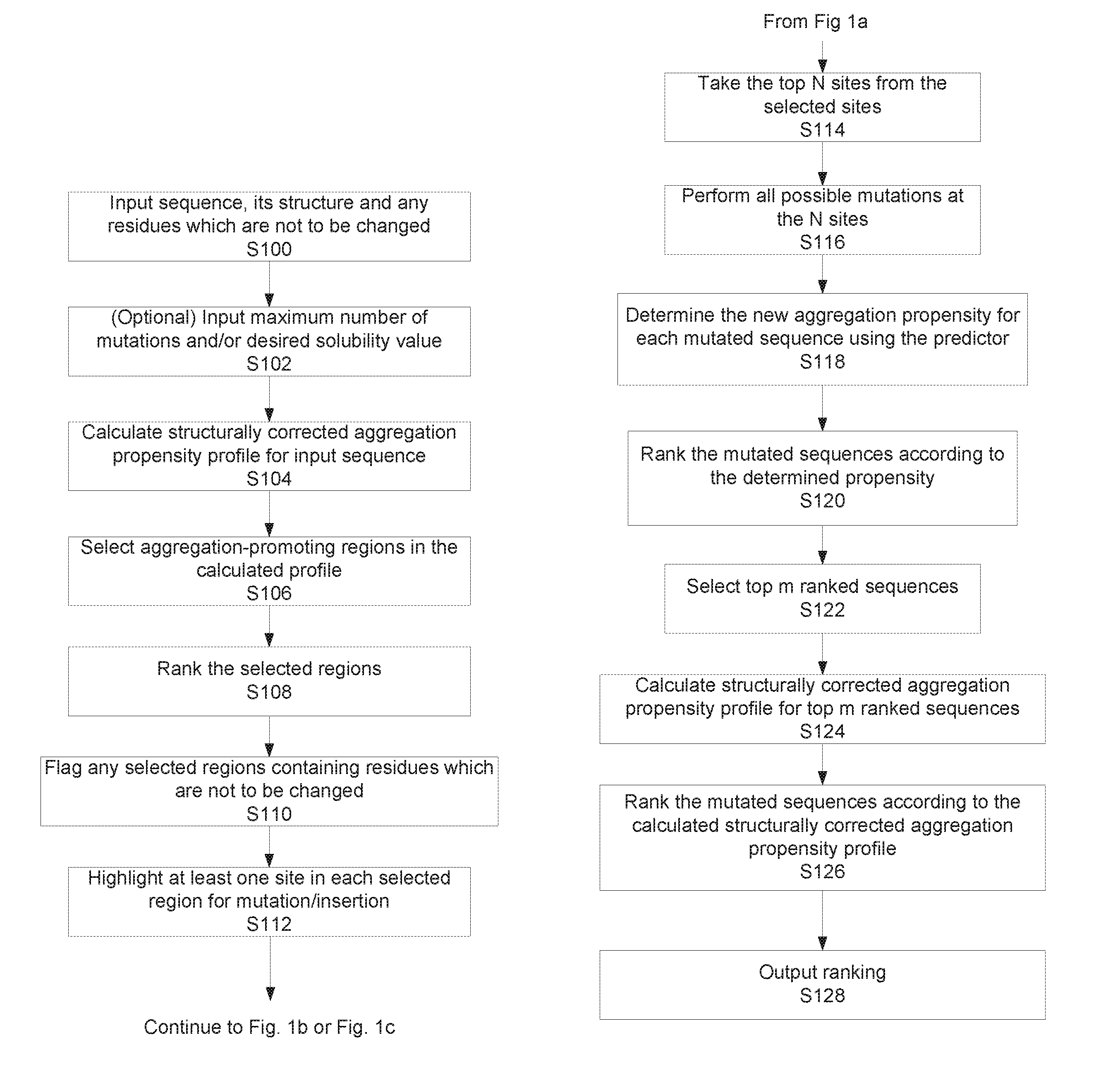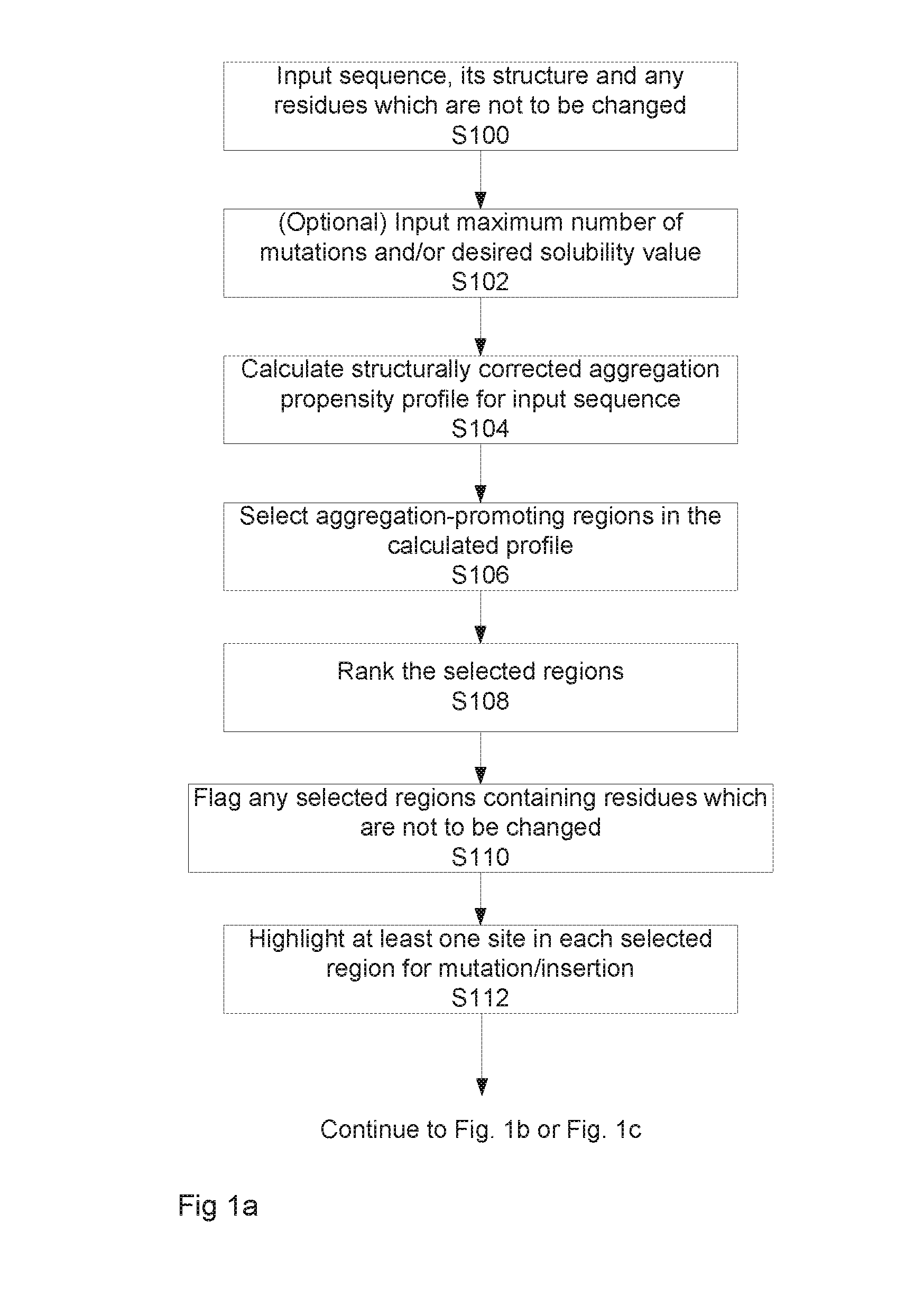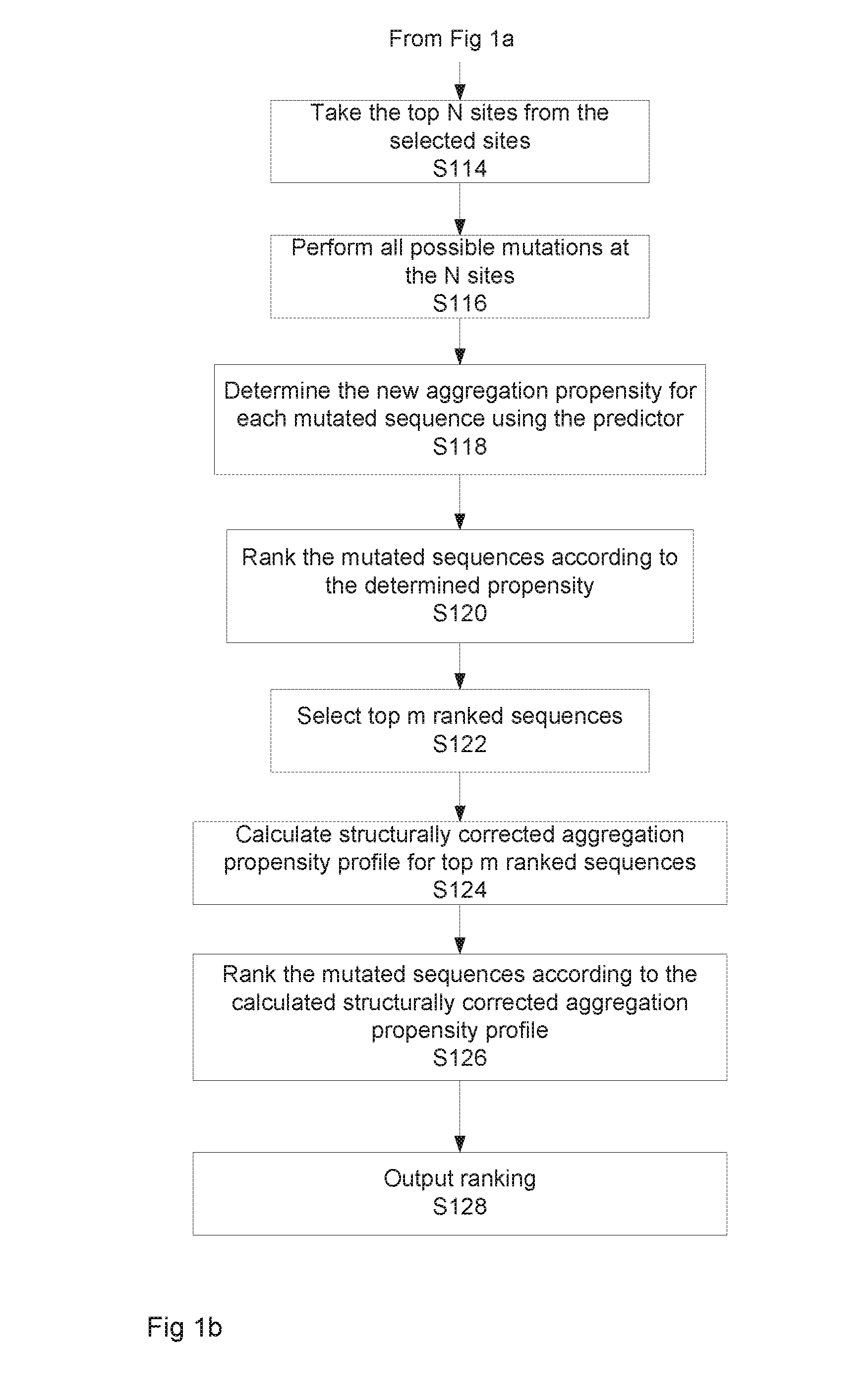Rational method for solubilising proteins
a solubility and protein technology, applied in the field of solubility prediction of polypeptide chains, can solve the problems of affecting activity and efficiency, further exasperation, and poor solubility of proteins, and achieves a good level of approximation and is easy to apply
- Summary
- Abstract
- Description
- Claims
- Application Information
AI Technical Summary
Benefits of technology
Problems solved by technology
Method used
Image
Examples
Embodiment Construction
[0123]FIGS. 1a to 1c illustrate two alternative implementations of the method for determining a modified sequence having a desired output value, in this example a solubility value. As mentioned above, the algorithm allows for the rational design and production of a target polypeptide chain with a desired solubility, which is related to, but distinct from, the aggregation propensity. FIG. 1d schematically illustrates the relationship between solubility and aggregation propensity. It shows that the solubility of a protein depends on the free energy difference between the native and the aggregated states, while the aggregation rate depends on the free energy barrier between these two states. As explained in more detail below, the method calculates the aggregation propensity of the polypeptide chain, selects those residues which contribute more to the aggregation propensity and finally designs some mutations or insertion to increase the solubility.
[0124]Returning to FIG. 1a, as shown at...
PUM
 Login to View More
Login to View More Abstract
Description
Claims
Application Information
 Login to View More
Login to View More - R&D
- Intellectual Property
- Life Sciences
- Materials
- Tech Scout
- Unparalleled Data Quality
- Higher Quality Content
- 60% Fewer Hallucinations
Browse by: Latest US Patents, China's latest patents, Technical Efficacy Thesaurus, Application Domain, Technology Topic, Popular Technical Reports.
© 2025 PatSnap. All rights reserved.Legal|Privacy policy|Modern Slavery Act Transparency Statement|Sitemap|About US| Contact US: help@patsnap.com



